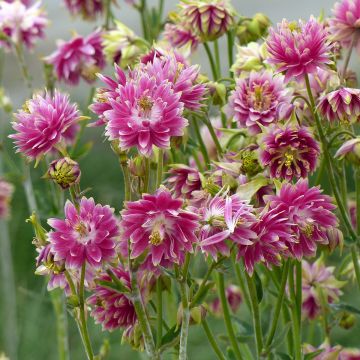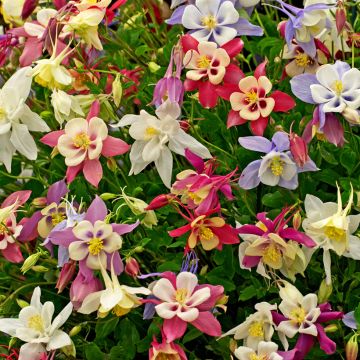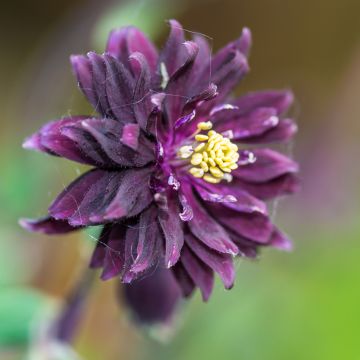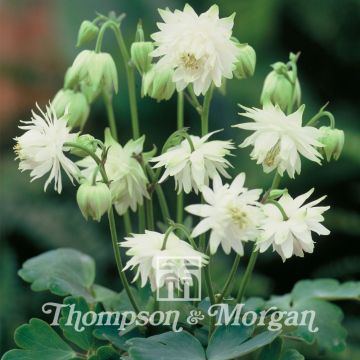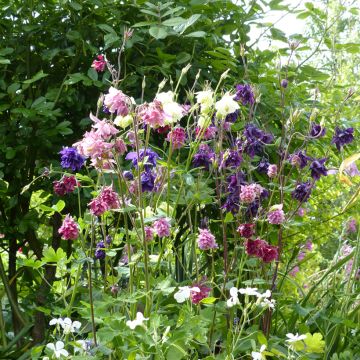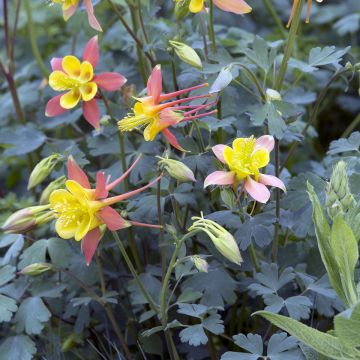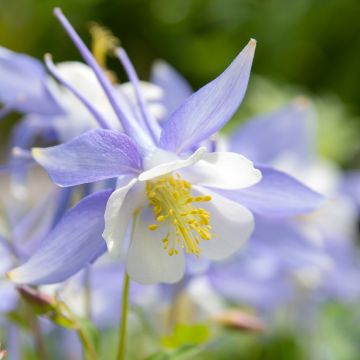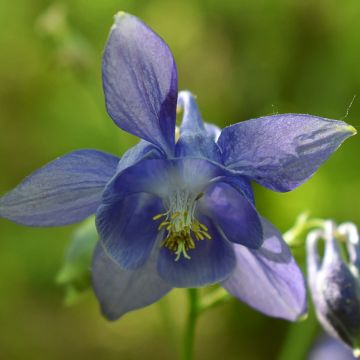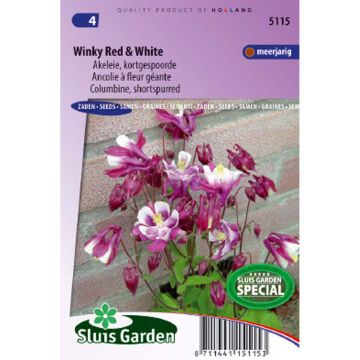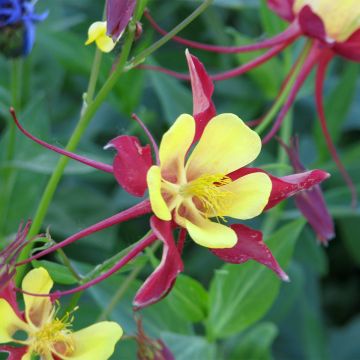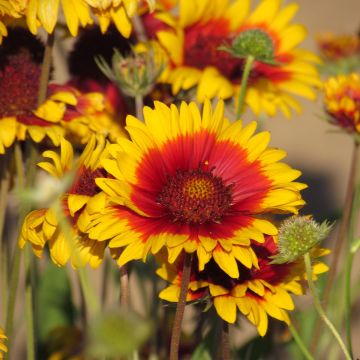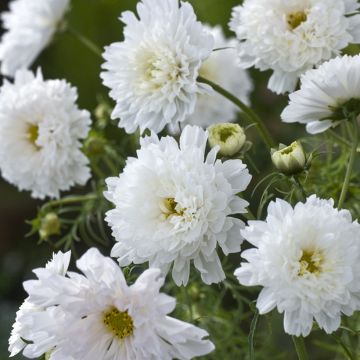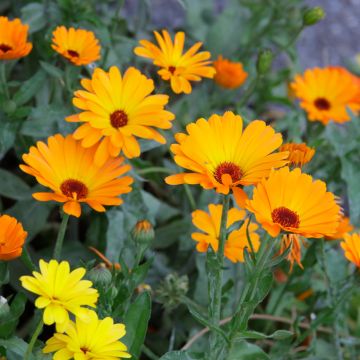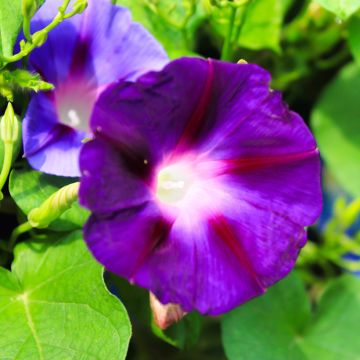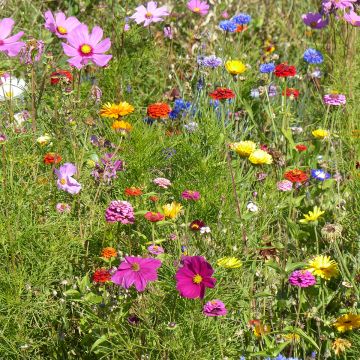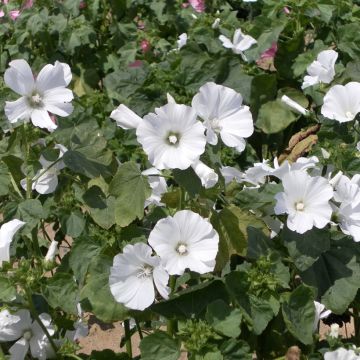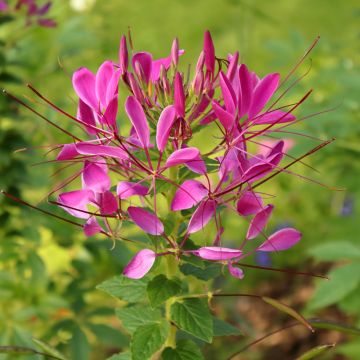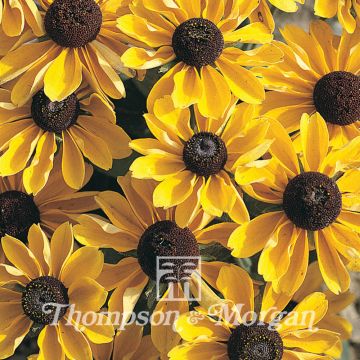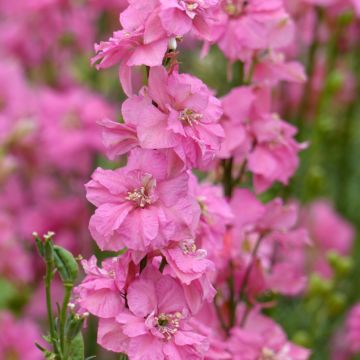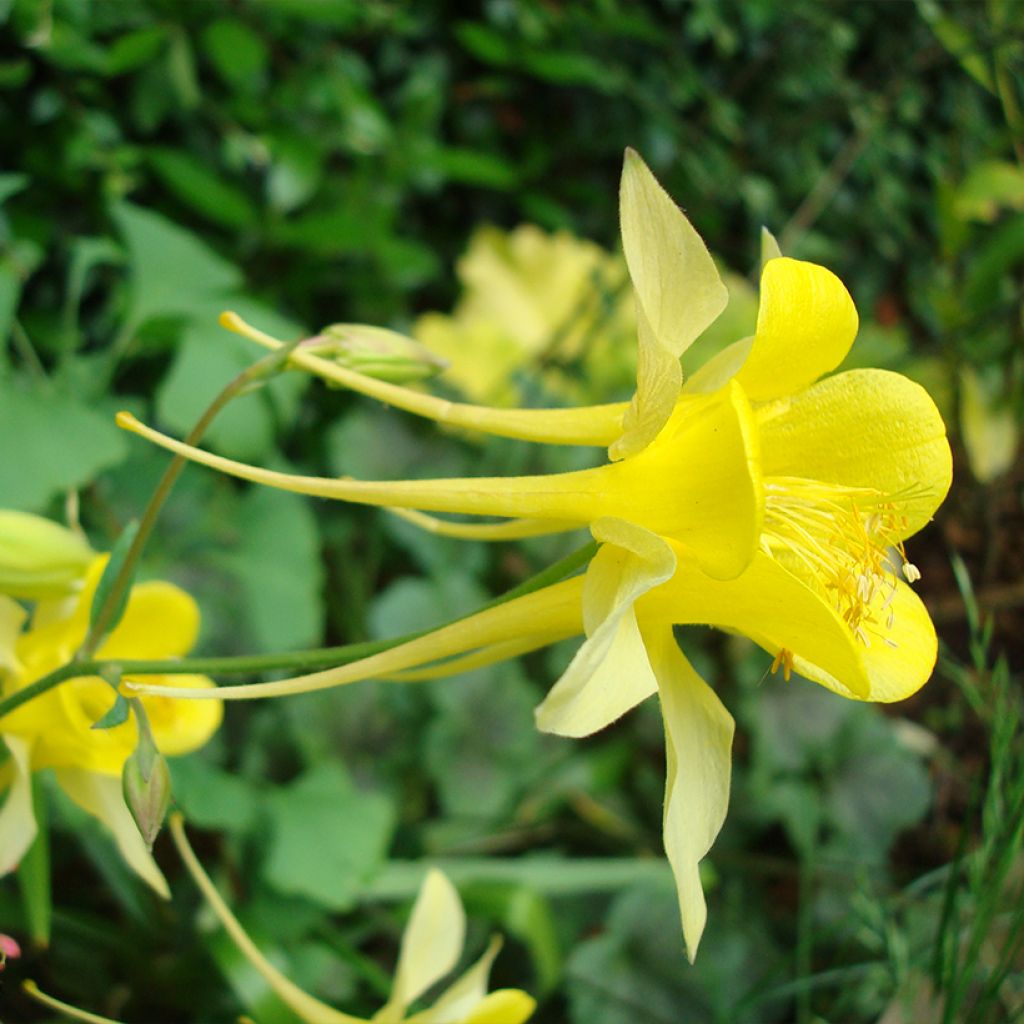

Aquilegia chrysantha Yellow Queen seeds - Columbine
Aquilegia chrysantha Yellow Queen seeds - Columbine
Aquilegia chrysantha Yellow Queen
Golden Columbine, Yellow Columbine
This item cannot be shipped to the selected country
Dispatch by letter from €3.90
More information
Schedule delivery date,
and select date in basket
This plant carries a 6 months recovery warranty
More information
We guarantee the quality of our plants for a full growing cycle, and will replace at our expense any plant that fails to recover under normal climatic and planting conditions.
Seed-only orders are dispatched by sealed envelope. The delivery charge for seed-only orders is €3.90.
Does this plant fit my garden?
Set up your Plantfit profile →
Description
Aquilegia chrysantha 'Yellow Queen' is a majestic columbine adapted to mountainous areas. This cultivar is distinguished by its large, long-spurred flowers in a very bright lemon yellow, ideal for adding a touch of elegance and vibrant colour in shaded or partially sunny areas of the garden. Plant it in a border, a flower bed, or in a slightly shaded rockery.
Aquilegia chrysantha 'Yellow Queen' belongs to the Ranunculaceae family, like all columbines, but also like anemones. The species, called golden columbine, is native to canyons and wet areas in the southern United States and northern Mexico. The 'Yellow Queen' cultivar is a perennial plant that reaches a height of 60 to 80 cm with a similar width. This variety is characterised by bright yellow flowers with long curved spurs, measuring up to 7 cm in diameter. These flowers appear in spring, usually between April and May, and emit a light fragrance. The foliage consists of delicate, finely cut leaves, often compared to ferns. These leaves are a bluish-green or medium green. Each leaf is divided into rounded lobes, giving the foliage a light, airy texture. It is a vigorous plant with moderate growth that naturalises easily in gardens under suitable conditions. It is hardy down to -35 °C and tolerates a wide range of soils, provided they are well-drained. Its above-ground vegetation is deciduous: it often disappears at the end of the flowering season, especially when summer temperatures are high. The plant goes into dormancy after flowering or in autumn (depending on the climate) before reappearing the following spring.
This 'Yellow Queen' columbine thrives in gently shaded areas of the garden. It pairs well with Heucheras, Bleeding Hearts, and shade-loving perennial geraniums (Geranium phaeum).
Report an error about the product description
Flowering
Foliage
Plant habit
Botanical data
Aquilegia
chrysantha
Yellow Queen
Ranunculaceae
Golden Columbine, Yellow Columbine
Cultivar or hybrid
Other Aquilegia Colombine Seeds
Planting and care
The seeds of Aquilegia chrysantha 'Yellow Queen' can be sown in spring or autumn, but they benefit from a cold stratification period to stimulate germination. Before sowing, place the seeds in the refrigerator for about 3 to 4 weeks. Then sow them on the surface of a light, well-draining soil, without completely covering them, as they need light to germinate. Keep the substrate moist, but not waterlogged, and ensure that the soil temperature remains around 15 to 20°C. Germination can take 3 to 4 weeks. Young plants should be transplanted as soon as they are large enough to handle.
Cultivation:
Aquilegia chrysantha 'Yellow Queen' prefers well-draining soil, rich in organic matter (humus or compost), and can adapt to different soil textures, clayey, sandy, or loamy. It thrives in both partial sun and light shade, although shade is preferable in hot regions to prevent foliage from drying out. It requires moderate humidity but can tolerate some dry periods once established. During flowering (spring to early summer), water regularly to promote prolonged flowering. After flowering, reduce watering, as this perennial tends to go into dormancy during the hottest months.
Sowing period
Intended location
This item has not been reviewed yet - be the first to leave a review about it.
Flower seeds
Haven't found what you were looking for?
Hardiness is the lowest winter temperature a plant can endure without suffering serious damage or even dying. However, hardiness is affected by location (a sheltered area, such as a patio), protection (winter cover) and soil type (hardiness is improved by well-drained soil).

Photo Sharing Terms & Conditions
In order to encourage gardeners to interact and share their experiences, Promesse de fleurs offers various media enabling content to be uploaded onto its Site - in particular via the ‘Photo sharing’ module.
The User agrees to refrain from:
- Posting any content that is illegal, prejudicial, insulting, racist, inciteful to hatred, revisionist, contrary to public decency, that infringes on privacy or on the privacy rights of third parties, in particular the publicity rights of persons and goods, intellectual property rights, or the right to privacy.
- Submitting content on behalf of a third party;
- Impersonate the identity of a third party and/or publish any personal information about a third party;
In general, the User undertakes to refrain from any unethical behaviour.
All Content (in particular text, comments, files, images, photos, videos, creative works, etc.), which may be subject to property or intellectual property rights, image or other private rights, shall remain the property of the User, subject to the limited rights granted by the terms of the licence granted by Promesse de fleurs as stated below. Users are at liberty to publish or not to publish such Content on the Site, notably via the ‘Photo Sharing’ facility, and accept that this Content shall be made public and freely accessible, notably on the Internet.
Users further acknowledge, undertake to have ,and guarantee that they hold all necessary rights and permissions to publish such material on the Site, in particular with regard to the legislation in force pertaining to any privacy, property, intellectual property, image, or contractual rights, or rights of any other nature. By publishing such Content on the Site, Users acknowledge accepting full liability as publishers of the Content within the meaning of the law, and grant Promesse de fleurs, free of charge, an inclusive, worldwide licence for the said Content for the entire duration of its publication, including all reproduction, representation, up/downloading, displaying, performing, transmission, and storage rights.
Users also grant permission for their name to be linked to the Content and accept that this link may not always be made available.
By engaging in posting material, Users consent to their Content becoming automatically accessible on the Internet, in particular on other sites and/or blogs and/or web pages of the Promesse de fleurs site, including in particular social pages and the Promesse de fleurs catalogue.
Users may secure the removal of entrusted content free of charge by issuing a simple request via our contact form.
The flowering period indicated on our website applies to countries and regions located in USDA zone 8 (France, the United Kingdom, Ireland, the Netherlands, etc.)
It will vary according to where you live:
- In zones 9 to 10 (Italy, Spain, Greece, etc.), flowering will occur about 2 to 4 weeks earlier.
- In zones 6 to 7 (Germany, Poland, Slovenia, and lower mountainous regions), flowering will be delayed by 2 to 3 weeks.
- In zone 5 (Central Europe, Scandinavia), blooming will be delayed by 3 to 5 weeks.
In temperate climates, pruning of spring-flowering shrubs (forsythia, spireas, etc.) should be done just after flowering.
Pruning of summer-flowering shrubs (Indian Lilac, Perovskia, etc.) can be done in winter or spring.
In cold regions as well as with frost-sensitive plants, avoid pruning too early when severe frosts may still occur.
The planting period indicated on our website applies to countries and regions located in USDA zone 8 (France, United Kingdom, Ireland, Netherlands).
It will vary according to where you live:
- In Mediterranean zones (Marseille, Madrid, Milan, etc.), autumn and winter are the best planting periods.
- In continental zones (Strasbourg, Munich, Vienna, etc.), delay planting by 2 to 3 weeks in spring and bring it forward by 2 to 4 weeks in autumn.
- In mountainous regions (the Alps, Pyrenees, Carpathians, etc.), it is best to plant in late spring (May-June) or late summer (August-September).
The harvesting period indicated on our website applies to countries and regions in USDA zone 8 (France, England, Ireland, the Netherlands).
In colder areas (Scandinavia, Poland, Austria...) fruit and vegetable harvests are likely to be delayed by 3-4 weeks.
In warmer areas (Italy, Spain, Greece, etc.), harvesting will probably take place earlier, depending on weather conditions.
The sowing periods indicated on our website apply to countries and regions within USDA Zone 8 (France, UK, Ireland, Netherlands).
In colder areas (Scandinavia, Poland, Austria...), delay any outdoor sowing by 3-4 weeks, or sow under glass.
In warmer climes (Italy, Spain, Greece, etc.), bring outdoor sowing forward by a few weeks.

































